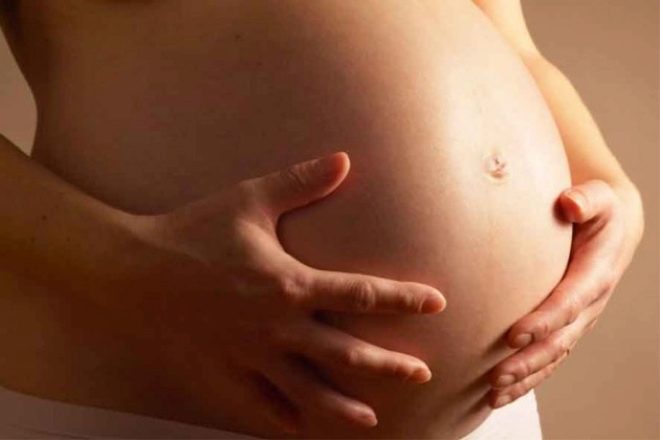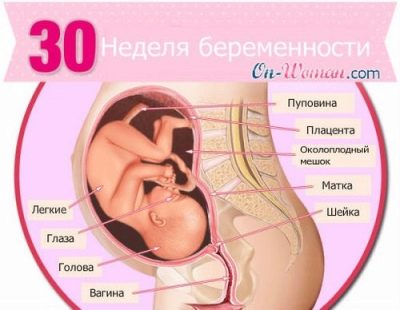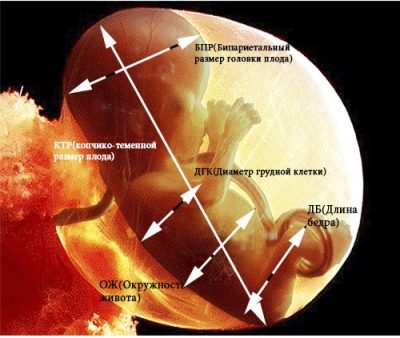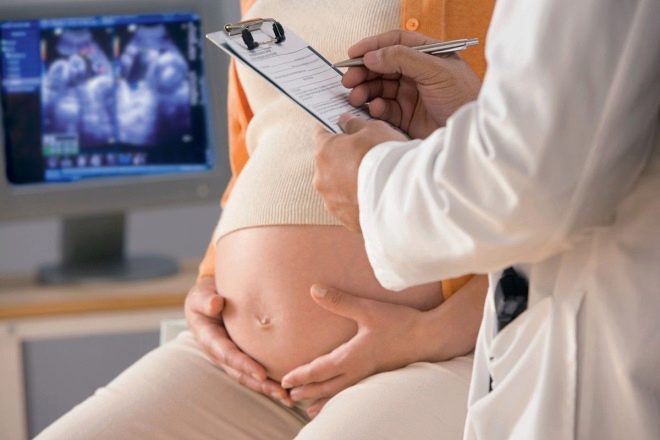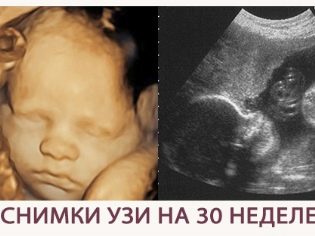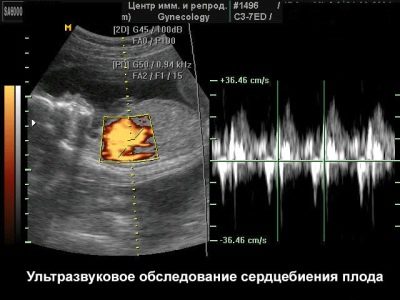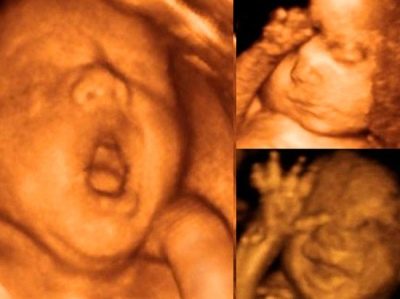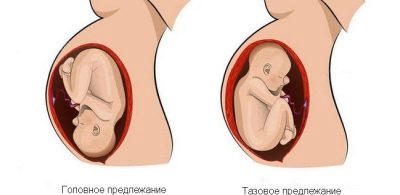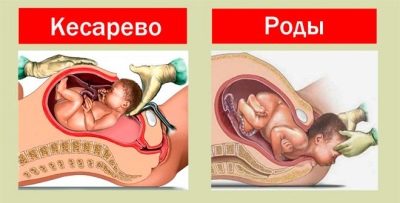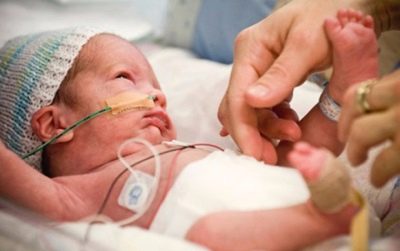Fetal development at 30 weeks gestation
The third trimester of pregnancy is a very important period, because very soon the baby will be born. This article will tell about the features of fetal development at 30 weeks.
Anatomical features
By the beginning of the third trimester, the children's organism prepared itself for an independent life quite well. A small heart pumps over a liter of blood per day, the brain coordinates the work of the internal organs. The baby is gradually preparing for the transition to a new habitat.
Doctors necessarily conduct examinations that allow us to estimate the size of the fetus. This test is very important, as it shows how well the intrauterine development proceeds.
The basic criteria for fetal body parameters are its height and weight. In the third trimester of pregnancy, the baby rather intensively gains exactly the mass of his body, and already practically does not grow in length. This feature is largely due not to the intensive development of the muscles and bones of the child, but the appearance of clusters of brown adipose tissue. Brown fat is necessary for the child's body, as it protects it from various hypothermia.
Quite accurately determine the main dimensions of the body of the fetus can be when conducting ultrasound. Each week of the third trimester is characterized by its norms. The normal values of the main clinical signs that can be determined during an ultrasound scan are shown in the table below.
Investigated Criterion | Norm at 30 weeks gestation |
Growth | 36-37 cm |
Weight | 1350-1400 grams |
Biparietal size (BPR) | 72-85 mm |
Forearm Bone Length | 43-50 mm |
Bone length of shin | 50-57 mm |
Thigh length | 53-62 mm |
Shoulder length | 50-57 mm |
Abdominal circumference | 23.9-29 cm |
Head circumference | 26.6-30.5 cm |
Frontal-nuchal size | 90-105 mm |
All values obtained fetometrii necessarily reflected in the medical report, which is issued to a pregnant woman after the procedure. They should be evaluated by an obstetrician-gynecologist who monitors the course of a specific pregnancy.
It is important to remember that the fetometric conclusion is not an independent diagnosis and requires the mandatory evaluation of a physician.
How does the fetus develop?
Intrauterine fetal development is a very complex and multistep process. The main task of the third trimester, of course, is to prepare the child's body for birth. In a few weeks, which still separate the crumb from birth, all the internal organs of his body must prepare for the upcoming independent work.
The most important organ that coordinates the work of the entire child's body is the brain. The cerebral cortex of the fetus already has many furrows and even convolutions. Every day their number continues to increase. Brains become deeper and more pronounced, which inevitably affects the behavior of the baby. So, the child gets more and more reflexes necessary for his life.
Pretty good development of the senses contributes to the fact that the fetus can experience their own feelings.They arise as a response to stimuli coming from the external environment. So, the crumb is already able to distinguish between different tastes and turn away from the bright light falling on his face. Scientists believe that at week 30, the baby is already able to respond to various smells that his mom inhales. If the smell is too strong and irritating for the baby, it causes a certain discomfort in the child.
Interestingly, already at 29-30 weeks of pregnancy, the baby is able to experience pain - this is due to the appearance of susceptibility to pain stimuli in the child. The appearance of a similar reaction also indicates the normal development of the children's nervous system.
An interesting feature of this period is the occurrence of hiccups in the fetus. Usually, the fetus hiccups after swallowing a fairly large amount of amniotic fluid, because the baby can swallow about 500 ml of fluid a day. Many mothers are worried about this, thinking that such a process could somehow harm the baby. You should not worry about the emerging hiccups in the fetus - this reaction is physiological and necessary for the full development of digestion and breathing in the baby.
For the functioning of the child's body requires a good work of the heart. Fetal heart rate at 30 weeks gestation can be quite easily calculated. This counts the number of heartbeats per minute. Normal values of heart rate (HR) at this stage are 140-160 beats per minute.
The dynamics of changes in the number of heartbeats in 60 seconds is very important. It allows you to assess whether a small heart of a child is experiencing a substantial load or is working normally. Evaluation of fetal heart rate necessarily carried out at every medical examination, which passes a pregnant woman.
Specific changes in the fetus occur in the reproductive system. In boys at 29-30 weeks, the testicles from the abdominal cavity begin to descend into the scrotum. Immediately it should be noted that this process does not always occur during pregnancy - the testicles can also descend after the birth of a child into the world. However, the second option for lowering the testicles, according to experts, is less favorable.
In girls, the genitals are almost completely formed - thus, the baby has already formed a certain set of eggs. It will be stored in the ovaries until reproductive age.
Movements
By this time of pregnancy, the baby’s motor activity is somewhat ordered. In this case, the movements of the child become more intense, and the pregnant woman already feels quite well the movements of her baby.
During the day, the baby shows its physical activity is not constant. Like an adult, the crumb is already able to distinguish between day and night. The brain of the fetus is already functioning in a special mode and distinguishes the circadian rhythm. Thus, the baby is usually active during the day and sleeps at night.
But it also happens that the fruit confuses day with night. In this case, the baby can wake up your mother with active pushes in the stomach. In this case, experts recommend a pregnant woman to breathe more easily, change the position in the bed and try to tell your child a fairy tale. The calm voice of the mother has a calming effect on the baby.
In order for the child to gradually form the correct mode of the day, first of all, the daily routine should be kept by his mother. So, she should try to go to bed and wake up at a certain, always the same time.
Motor activity of the fetus is a very important clinical marker of how fetal development proceeds. So, if for some reason the baby has become quite hard and too often kicked, the expectant mother should definitely discuss this situation with her obstetrician-gynecologist.
Increased motor activity of the fetus is preceded, as a rule, by a number of provoking factors.To normalize the condition of the baby, the doctor will make a whole set of recommendations. They usually include tips on normalizing nutrition, daily regimen, and special breathing exercises. This is necessary so that the baby fully developed and did not experience any discomfort while in the womb.
What does it look like?
The face of the fruit every day becomes all the sweeter. The contours of the nose are already quite clear, and the back of the nose itself is not as flat as before.
The fetus appears cheeks. On the head of a child grow short hair. They already show a specific pigment, which determines the individual hair color. Of course, in the future, the hair color may change, but the initial shade is already evident at this time.
Gradually changing the color of the skin of the baby. So, the skin becomes more pink, this contributes to the accumulation in the children's body, not only brown, but white adipose tissue. The color of the skin gradually becomes physiological - pale pink. Little fingers on hands and feet are gradually extended. The nails that cover the distal phalanges also increase slightly.
How is it located in the womb?
The location of the fetus is a very important criterion, because it must be evaluated by doctors several times during the entire pregnancy. It is important to note that before birth the position of the fetus may change, which is why experts always control the position of the baby in the uterus.
A fairly favorable option for the location of the fetus in the womb is headache presentation - in this case, the risk of birth injuries is minimal. With the head previa possible independent vaginal delivery.
A less favorable option is the transverse position of the fetus. In this case, the baby lies as it were across the longitudinal axis of the uterus, while its head and pelvis are perpendicular to the longitudinal line of the iliac crest. With this option, the location of the child the risk of birth trauma is already much higher than with headache presentation.
Pelvic and buttock presentation are unfavorable from an obstetric point of view. In this case, independent natural childbirth can be dangerous development of birth trauma. In order for the baby to be born into the world without damage, doctors resort to surgical methods of obstetrics. A baby is “taken out” of the uterus with such variants of presentation, usually by cesarean section.
The low position of the baby in the uterus can be dangerous development of a number of pathologies of pregnancy. Such a variant of the location of the fetus is an important reason for the expectant mother to closely monitor their condition. If you have cramping pain or leakage of amniotic fluid, a pregnant woman should immediately seek medical help.
A baby born at 30 weeks gestation is already viable from a physiological point of view, but in practice it’s quite difficult to leave such an early child. After birth, these babies require special medical care, which can only be done in a specialized department.
About what happens to mother and baby in 30 weeks of pregnancy, see the next video.

